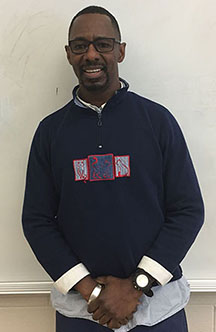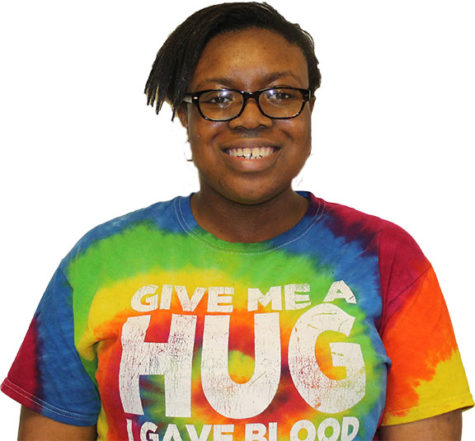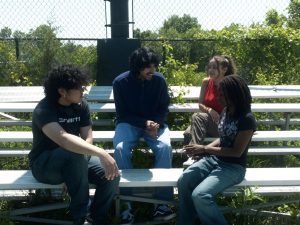A World of Languages

World Languages teacher Mr. Morel learned several languages while growing up.
April 4, 2017
In an increasingly diverse world, it has become necessary that people speak more than one language. Many school districts around the country recognize that necessity, but their efforts to bring about change in their offerings remains far behind other nations.
Students in some schools in the United States have the option of learning a new language in middle school. In Montgomery County Public Schools (MCPS), this opportunity is generally given to students in sixth grade, but research shows that, by the time a child reaches middle school, they are behind the rest of the world in language acquisition.
According to Kat Devlin of the Pew Research Center, “in most European countries, students begin studying their first foreign language as a compulsory school subject between the ages of 6 and 9.” Research shows that younger children have a stronger capacity to adopt a second language. As a person ages, their capacity to learn a new language decreases.
The first step to promote multilingualism is to create more world language classes and immersion programs for elementary-aged children. Montgomery County has twelve language-immersion programs: seven in elementary schools (three Spanish, two French, and two Chinese) and five in middle schools (one Chinese, two French, and two Spanish). Not all students who attend the individual schools are participants in the immersion programs. Students must apply for seats in these programs and, according to MCPS, “approximately 26 or 52 seats” are available in the lottery process. The number of seats available vary among the programs, and preference is typically given to students who live locally or have siblings who already participate in the immersion program. For students who want to participate in the immersion program in grades 2-5, admission “is determined by both language proficiency and available space.”
Freshman Katy Kane, who was born in Maryland, did not learn English until she was two. Her mother was not fluent in English, so Kane learned the language her mother spoke: French and Wolof, a form of language spoken Senegal, The Gambia, Mauritania, as well as spoken by the Wolof people. She recalls that it took her a year to become fluent in English. She was aided, in part, by watching English language television shows including Barney and listening to her friends speaking English.
The objective of immersion programs is to teach students a second language. Students who participate in the program during elementary school have the decision to continue with the program in the middle schools that have their target-language program. Kane attended an MCPS Spanish immersion program at Burnt Mills Elementary School from Pre-K to first grade. All of her classes were taught in Spanish and, even though she wasn’t fluent in the language in the beginning, she was learning “at a faster pace than you would in an average Spanish class.” Eventually, Kane decided to retake Spanish in seventh grade and is currently in Honors Spanish 3.
Learning a new language must be paired with determination for it to go well. French teacher Mr. Morel grew up speaking French and Wolof. His father was a police inspector in Guinea so, whenever his family moved from one region to another region within the country, Mr. Morel immersed himself in the languages of Soussou, Maliké, and Polar, some languages found in Guinea, and within the year he would be fluent. At 12 years of age, Mr. Morel moved to Senegal where he learned Wolof and Serere, but now he can understand only the latter, rather than being fully fluent like he is with Wolof. Guinea has about twelve dialects, and Senegal has about eight. Remarkably, Mr. Morel did not properly begin learning English until he entered George Washington University. Once a week for one hour, Mr. Morel would attend English classes which focused a great deal on oral skills. Most students in Montgomery County can understand how difficult this is, as an emphasis on listening and oral skills are not prominent until they reach their fourth year learning the language. This form of language acquisition can be quite frustrating because learning a new language is arduous. At an older age, one is unlikely to receive a full immersion in a language. Mr. Morel is an exception to this idea. He learned Spanish for six months and had the opportunity to travel to Guatemala and Mexico for two months, which allowed him to hone his skills. On that trip, he practiced his Spanish with all of the Spanish-speaking people he encountered.
Coming back to the idea of determination being a key factor in learning languages, Mr. Morel finds that students “who enjoy learning the language will most likely learn fast and become better at it than those who are just trying to get a grade out of it.”
Mr. Morel’s point here is that learning a new language, which can seem quite a task at first, is completely doable if you simply persevere; in fact, a number of Paint Branch’s language teachers did not learn a second language until later in life.
Spanish teacher Mrs. Miller “spoke English at home, only English, and. . . took Spanish in high school.” According to Mrs. Miller, her high-school Spanish classes were mainly a study of verbs and a bit of vocabulary. Like most high schoolers, she dropped her language study after she completed the mandatory three years. However, she recalls that within her she felt a yearning for the language, so in college she retook Spanish and loved it. With that love, she pushed to become fluent and, after studying abroad for a semester, she noticed that, though her Spanish may not have been elegant, she “could always say what [she] wanted to say.”
It’s best for a person to learn a new language when they’re young and capable, but “definitely don’t give up” if you’re learning a new language later in life, says Mrs. Miller. “It’s frustrating to not be able to express yourself and that does take a long time,” Mrs. Miller says. She does offer this solid piece of advice: “Pay attention to the details.”
A new language offers one many opportunities in life, but the most important one is having the opportunity to better understand a culture because every language is unique and tells a story about the people who speak it. The best course of action is for schools to implement world language programs in elementary schools but, for the older people who want to delve into the world of languages, it’s not impossible. Nurturing a language with time and care will permit you to become fluent in no time.












































